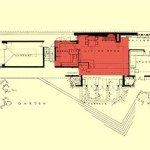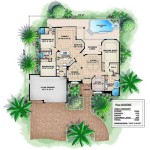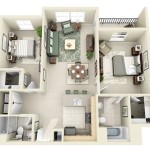One-Story Tiny Home Floor Plans: Maximizing Space in Minimal Square Footage
The appeal of tiny homes lies in their ability to offer a simple, sustainable, and affordable way of life. A key element in achieving this is the efficient design of the floor plan. One-story tiny home floor plans are particularly popular due to their practicality and ease of accessibility. This type of design eliminates the need for stairs, making them ideal for individuals of all ages and mobility levels.
Key Considerations for One-Story Tiny Home Floor Plans
Designing a functional and comfortable one-story tiny home floor plan necessitates careful consideration of several key aspects. These include:
1. The Footprint
The "footprint" refers to the overall size of the home, measured in square feet. This crucial factor determines your budget, the amount of space available, and the possibilities for layout and functionality. Tiny homes typically range between 100 and 400 square feet, although some can even reach 600 square feet. A smaller footprint offers advantages in terms of affordability, while a larger footprint provides more space for amenities and flexibility.
2. Multi-Functionality
Limited square footage demands creative solutions to maximize functionality. This often translates to multi-functional spaces. For instance, a sofa can double as a bed, a dining table can be used as a workspace, and a loft area can serve both as a sleeping space and a storage area. Careful planning is needed to ensure these multi-functional areas meet your specific lifestyle needs and preferences.
3. Traffic Flow
The ideal one-story tiny home floor plan should facilitate smooth traffic flow. This means ensuring a clear path for movement throughout the home, avoiding tight spaces that make it difficult to navigate. For example, strategically placing doorways, furniture, and appliances will promote an efficient use of space and a pleasant living experience.
4. Natural Light and Ventilation
Even though space is limited, it is crucial to maximize natural light and ventilation. This can be achieved through large windows, skylights, and well-placed vents. Natural light brightens a space, creating a sense of openness and warmth. Ventilation is necessary to ensure fresh air circulation, preventing stagnant air and moisture buildup.
Popular One-Story Tiny Home Floor Plan Styles
There are several popular one-story tiny home floor plan styles, each offering distinct advantages based on specific needs and preferences. Some of the most common styles include:
1. The Open Concept Floor Plan
The open concept floor plan is a popular choice for those who value a spacious and integrated living experience. It minimizes walls and partitions, creating a seamless connection between the living, dining, and kitchen areas. This design maximizes the sense of space and promotes a sense of flow throughout the home.
2. The Studio Floor Plan
The studio floor plan typically features a single, open space that encompasses all the essential living functions. This minimalist design emphasizes efficiency and provides flexibility in arranging furniture and creating distinct zones within the space. It is ideal for individuals who prioritize simplicity and ease of maintenance.
3. The Loft Floor Plan
The loft floor plan incorporates an elevated sleeping area accessed by a ladder or stairs. This design often includes a kitchen and living area below the loft, maximizing the use of vertical space and maximizing floor area for other functions. This style is suitable for individuals who prefer a more traditional floor plan layout.
Designing a One-Story Tiny Home Floor Plan
There are several ways to design a one-story tiny home floor plan that perfectly suits your needs. You can:
1. Utilize Online Tools
Several online tools and software are available to help you create floor plans. Many programs offer free trials and a user-friendly interface that allows you to drag and drop furniture, walls, and other elements to create your ideal layout. Additionally, these tools often include a library of premade floor plans that can inspire your design.
2. Consult a Tiny Home Designer
For a more personalized approach, you can consult with a professional tiny home designer. They possess the expertise to create a floor plan that maximizes space, incorporates essential features, and meets your specific requirements. A designer can offer valuable insights into building codes, material selection, and overall efficiency.
3. Research and Inspiration
Before beginning the design process, invest time in researching various floor plan layouts and gathering inspiration. Explore online resources, magazines, and books dedicated to tiny homes. Look at existing floor plans, analyze their strengths and weaknesses, and consider the features that are most important to you.
Choosing a one-story tiny home floor plan is an important decision that will influence your lifestyle and living experience. By carefully considering your needs, exploring different styles, and utilizing available design resources, you can create a functional, stylish, and comfortable space that perfectly fits your unique vision.

48 Ideas House Plans One Story Country Front Elevation For 2024 Remodelhouseplans Small Layout Floor Tiny

Small Cabin House Plans Floor Construction Guest

Tiny House Plan Examples

Tiny House Plans That Are Big On Style Houseplans Blog Com

27 Adorable Free Tiny House Floor Plans Craft Mart

1 Bedroom Tiny House Plan

New Tiny House Plans Blog Eplans Com

Tiny Home Floor Plans Crossroads Builders

Contemporary Tiny Home Plan With Cube Like Exterior 677009nwl Architectural Designs House Plans

One Story Style With 1 Bed Bath Contemporary House Plans Tiny Floor Small








